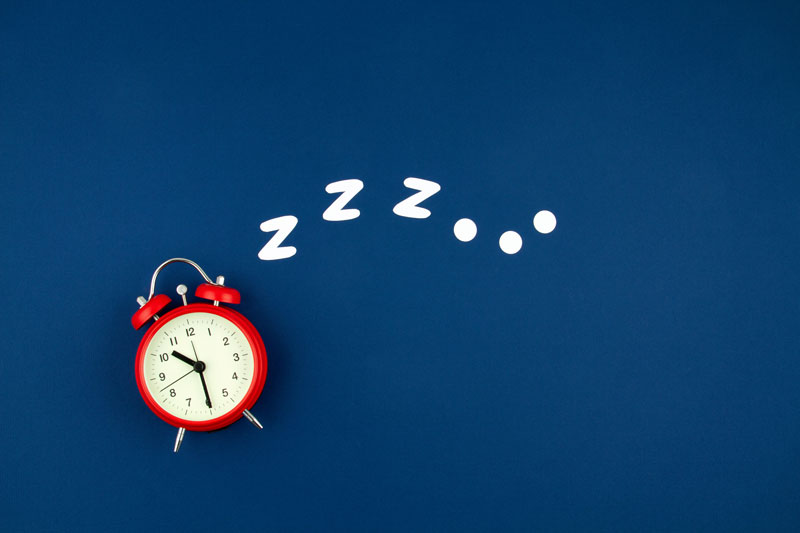10 Yoga Poses for Better Sleep: A Guide to Restful Nights

Getting a good night’s sleep might be difficult in today’s hectic society. But amidst all of life’s stress, the age-old discipline of yoga provides a calm haven—especially with its asanas that improve the quality of your sleep.
This article explores ten yoga positions that are exceptionally easy to do and yet incredibly powerful in setting the body and mind up for a peaceful night’s sleep.
These postures reduce physical stress and calm the mind, preparing the body and mind for sleep by combining deep breathing with mild stretching.
Every posture, which ranges from the relaxing “Supta Baddha Konasana” (Reclining Bound Angle Pose) to the calming “Balasana” (Child’s Pose), leads to a state of calmness and improves the quality of bedtime.
These positions are a means to improve your sleep quality and wake up feeling refreshed, regardless of your experience level with yoga.
Understanding the Yoga-Sleep Connection
The relationship between yoga and improved sleep is deeply rooted in the principles of yoga itself, which emphasize harmony between body and mind. Practicing yoga, especially before bedtime, creates a cascade of physiological changes conducive to sleep.
Yoga poses, or asanas, gently stretch and relax muscles, releasing physical tension. This alleviates discomfort that might impede sleep and signals the brain that it’s time to wind down.
The meditative aspect of yoga also plays a crucial role; it trains the mind to focus and detach from day-to-day worries, creating a peaceful mental environment perfect for slipping into a restful slumber.
To truly appreciate the power of yoga for better sleep, it’s essential to understand the deep-rooted connection between these two practices.
10 Yoga Poses for Better Sleep
1. The Corpse Pose (Savasana)
When it comes to yoga poses that promote better sleep, Savasana, often known as the Corpse Pose, is a leading contender. Savasana has a long history; it was first used in India, where its relaxing and healing properties were highly regarded.
To perform Savasana, lie flat on your back with your arms at your sides, palms facing up. Close your eyes and breathe deeply, allowing any tension to melt away.
Therapeutic applications of Savasana are numerous, including stress reduction, improvement of serotonin levels, and promotion of a good night’s sleep. It’s the perfect antidote to a busy, stressful day, calming the nervous system to prepare your body for sleep.
2. The Child’s Pose (Balasana)
Let’s now explore the Child’s Pose, or Balasana, another yoga pose that can help you sleep better.
You’ll learn about its benefits, the correct way to perform it, and any precautions you should be aware of.
It’s an easy pose to master, but knowing the right techniques and safety measures can significantly enhance its effectiveness.
Benefits of Balasana
Ever wondered how Balasana, commonly known as the Child’s Pose, can enhance your sleep quality? Despite its ancient history and numerous variations, this simple pose packs a powerful punch for sleep enhancement.
Here’s how:
- Stress Relief: Balasana gently stretches your back, hips, and thighs, inducing a calming effect on your nervous system. This helps to alleviate stress and anxiety, key culprits of poor sleep.
- Improved Circulation: Balasana can help soothe headaches and reduce insomnia symptoms by promoting blood circulation to your head.
- Deep Relaxation: The unique positioning of Child’s Pose encourages deep, mindful breathing, fostering a state of relaxation conducive to a good night’s sleep.
Performing the Pose Correctly
Wondering how to perform the Child’s Pose for maximum sleep benefits correctly? Achieving the right pose alignment and mastering breathing techniques are crucial.
Here’s a step-by-step guide to help you master the pose:
Steps | Instructions |
1. Kneel | Start by kneeling on your yoga mat with your feet together and your knees hip-width apart. |
2. Bend forward | Bend forward at the hips and stretch your arms out in front of you. |
3. Rest | Rest your forehead on the mat and your buttocks on your heels. |
4. Breathe | Practice deep, controlled breathing techniques while holding the pose. |
Child’s Pose Precautions
While mastering the Child’s Pose can significantly enhance your sleep quality, it’s equally important to be mindful of some precautions to ensure the pose doesn’t cause undue strain or discomfort.
Consider these three safety measures:
- Avoid this pose if you’ve recently had a knee injury or surgery. If the pose is uncomfortable, explore pose modifications such as using a bolster under your torso for support.
- If you’re pregnant, spread your knees wider apart to avoid putting pressure on your abdomen.
- Don’t force your buttocks to touch your heels. It’s more important to maintain a comfortable stretch in your back.
3. The Legs-Up-The-Wall Pose (Viparita Karani)
Now, let’s talk about the Legs-Up-The-Wall Pose or Viparita Karani. This pose isn’t only restorative and has numerous benefits, including relief from stress, anxiety, and insomnia.
Benefits of Viparita Karani

- Reduction of Anxiety and Stress: This pose helps to soothe your nervous system, reducing anxiety and stress, which can greatly improve your sleep quality.
- Improved Digestion: Regular practice can boost your digestion and elimination, fostering overall well-being.
- Increased Blood Circulation: The inverted position encourages blood flow to your upper body and brain, enhancing mental clarity.
Performing The Pose Correctly
Having explored the benefits of the Legs-Up-The-Wall Pose, let’s focus on mastering the correct execution of Viparita Karani to ensure you reap its full rewards.
Start by identifying a clear wall space. Position your mat perpendicular to the wall, leaving a small gap. Sit sideways against the wall, then gently swing your legs up, allowing your body to recline on the mat.
Common Mistakes to Avoid
Despite your best efforts, making some common mistakes while performing the Legs-Up-The-Wall Pose could hinder your progress and potential benefits.
Here are three key mistakes to avoid:
- Incorrect Breathing Techniques: Breathing is integral to yoga. If you’re holding your breath or breathing shallowly, you’re not maximizing the pose’s potential. Practice deep, steady breathing throughout the pose.
- Insufficient Distance from the Wall: Your buttocks should be as close to the wall as possible. You’re not getting the full benefits if you’re too far away.
- Poor Pose Adjustments: Failing to adjust your body correctly can lead to discomfort or injury. Ensure your legs are straight, your buttocks are against the wall, and your arms rest by your side.
A well-executed pose leads to better sleep.
4. The Butterfly Pose (Baddha Konasana)
Easing into the Butterfly Pose, or Baddha Konasana, can significantly help promote a restful night’s sleep. This pose aids in quietening the mind and relieving stress. However, be aware of the contraindications of Baddha Konasana.
If you’ve any groin or knee injuries, perform the pose cautiously. You can adopt butterfly pose modifications based on your comfort and flexibility level.
Here’s a quick guide for you:
Steps | Tips |
Sit with your legs straight out. | Use a blanket for support if needed. |
Bend your knees, pull your heels towards your pelvis. | Don’t force your knees down. |
Hold your feet firmly with your hands. | Breathe evenly, relax your muscles. |
5. The Seated Forward Bend (Paschimottanasana)
Let’s move on to the Seated Forward Bend or Paschimottanasana. This pose does wonders for your sleep by calming the brain, relieving stress, and stretching the spine and shoulders.
To reap these benefits, you’ll want to perform it correctly, so we’ll guide you through the steps.
Benefits of Paschimottanasana
Diving into the benefits of Paschimottanasana, you’ll find this pose can significantly improve your flexibility, reduce stress, and even enhance your digestion. Understanding the posture importance, you’ll realize that this seated forward bend can aid in flexibility enhancement.
Here are the top three benefits:
- Flexibility Improvement: Regular practice of Paschimottanasana stretches your lower back, hamstrings, and hips, improving overall flexibility and relieving tension.
- Stress Reduction: This pose calms the mind, relieving anxiety and mild depression. It’s a therapeutic posture for stress-induced insomnia.
- Digestion Enhancement: The forward bend stimulates the abdominal organs, aiding in digestion and relieving symptoms of menopause and menstrual discomfort.
Performing the Pose Correctly
To perform the Seated Forward Bend or Paschimottanasana correctly, you must focus on form and mindfulness, ensuring each movement aligns with your breath. Start by sitting upright on your mat, legs extended before you.
Inhale and raise your arms above your head, elongating your spine. As you exhale, lean forward from your hips, aiming to reach your feet while keeping your back straight. Don’t worry if you can’t reach your toes, just go as far as comfortable. The key is maintaining pose alignment throughout the movement.
6. The Supine Spinal Twist (Supta Matsyendrasana)
Embracing the Supine Spinal Twist, or Supta Matsyendrasana, can serve as a rejuvenating nightcap for your body, gently stretching the spine and relaxing your mind before sleep.
However, it’s important to be aware of Supta Matsyendrasana contraindications such as back or spinal injuries, as the pose may exacerbate these.
Here, we’ll offer three crucial Twisting technique tips to master this pose:
- Ease into it: Don’t force your body into the twist. Let gravity do its work, and the twist will deepen naturally.
- Use your breath: Relax further into the pose as you exhale. You can create space, you can navigate into that space.
- Keep your shoulders grounded: This ensures a safe, effective twist that targets the spine rather than straining the upper body.
7. The Standing Forward Bend (Uttanasana)
The Standing Forward Bend, or Uttanasana, is your next pose in your nightly yoga practice. This pose is well-known for its capacity to reduce tension and promote mental clarity.
Exhale as you lean forward from your hips, keeping your knees slightly bent and your head hanging limp. Stand tall. You can try Uttanasana modifications, such as bending your knees more or using a bolster for support, if you find this too strenuous.
But remember, there are also Uttanasana precautions to consider. Don’t force yourself into the pose if you have a back injury or high blood pressure; always listen to your body. With practice, Uttanasana can help you unwind before bed, promoting a deeper, more restful sleep.
8. The Reclining Bound Angle Pose (Supta Baddha Konasana)
After mastering the Uttanasana, you can try the Reclining Bound Angle Pose, or Supta Baddha Konasana, a pose celebrated for its relaxing and therapeutic properties. This pose offers many bound angle benefits, from easing tension to improving digestion.
Here’s a precise guide to help you master it:
- Start by sitting on your mat, bring the soles of your feet together, and let your knees drop to the sides, forming a diamond shape.
- Gently recline backward onto your elbows, then down onto your back.
- Relax your arms to your sides, palms up.
For added comfort, explore reclining pose variations, like placing a bolster under your spine or blocks under your knees. Practice regularly, and you’ll soon enjoy more restful nights.
9. The Extended Puppy Pose (Uttana Shishosana)
Let’s dive into the Extended Puppy Pose, or Uttana Shishosana, a therapeutic yoga pose that aids in stretching your spine and shoulders, which can be particularly beneficial for better sleep.
Components | Instructions | Tips |
Position | Start on all fours. Extend your arms in front of you, bowing your torso down. Keep your hips over your knees. | Don’t strain. Keep your movements gentle and controlled. |
Breath | Maintain deep, even breaths throughout. | Use your breath to deepen the stretch. |
Limitations | Be mindful of any physical limitations in Uttana Shishosana. | Modify as needed. Explore puppy pose variations. |
10. Setu Bandhasana (Bridge Pose)
To perform Setu Bandhasana, lie on your back with your knees bent and feet flat on the floor, hip-width apart. Place your arms alongside your body, palms facing down.
As you inhale, press into your feet and lift your hips towards the ceiling, keeping your thighs and feet parallel.
Clasp your hands under your back and extend through the arms to help stay on the tops of your shoulders. Hold the pose for a few breaths, then release and gently roll the spine back to the floor.
Benefits of Setu Bandhasana include:
- Strengthening the back, buttocks, and hamstrings.
- Stretching the chest, neck, and spine.
- Calming the brain and alleviating stress and mild depression.
- Improving digestion and relieving symptoms of menopause.
- Beneficial for those with asthma, high blood pressure, osteoporosis, and sinusitis
Wrap Up

Practicing regularly and with intention is key. Embrace these poses, allowing your body and mind to relax into them. You’re not just stretching your muscles but also stretching towards better sleep and happier mornings.
After all, a good night’s sleep is the first step to a brighter day.




